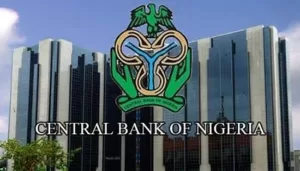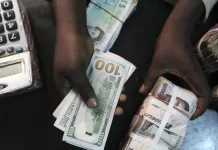At a time when most households are barely surviving due to the removed petrol subsidy and the increasing exchange rate of the Naira, there is an unprecedented rise in money in circulation.
The CBN says money in circulation surged for the month of September.
While that comes to media knowledge, most people in Nigeria cannot say the same of what they have in their pockets.

If you did not know or you have heard, well, money in circulation for the month of September 2023, rose to ₦66.42 trillion.
This was revealed by the Central Bank of Nigeria (CBN) when it said, Nigeria’s money supply increased to ₦66.42 trillion.
Have You Read: M.A.N Reacts To CBN Lifting Ban On 43 Items
The figure shows a marginal growth of about 1.94% from ₦65.15 trillion in August 2023.
As good as this information is, one cannot but wonder how many Nigerians this increase affects their pockets.
This besieges the mind, seeing as most people are struggling and are learning new coping techniques due to the economic challenges foisted on them bad leadership.
Many have lost their jobs, while many can barely feed due to the economic mess the country has found itself.
M2 Supply For September
The new figures come from the latest data released by the CBN as captured in its money and credit statistics.
The money supply, identified as M2, captures the total amount of money available in the economy at a particular moment.
Also, the figure shows a gain of about 25.70% or ₦13.58 trillion in nine months of 2023.
In January 2023, the apex bank told Nigerians that the money supply stood at ₦52.84 trillion, moving high to ₦52.92 trillion in February 2023.
It ended March 2023 at ₦54.19 trillion, rose to ₦55.65 trillion mark in April 2023, but dipped by 0.18% to ₦55.55 trillion in May.
Rising gradually, the M2 closed June and July 2023 at ₦64.36 trillion and ₦64.93 trillion, respectively.
M2 includes physical currency such as coins and banknotes, in addition to various types of deposits maintained by individuals, enterprises, and institutions in any financial institution.
Statistics revealed that certain components of the money supply, namely demand deposits, quasi-money, and currency outside banks, also witnessed growth and declines.
Specifically, quasi-money, which pertains to financial tools that can be easily converted to cash, surged from ₦40.9 trillion in August 2023 to ₦41.06 trillion in the month of September 2023.
Moreover, demand deposits, primarily made up of chequing accounts or funds in banks accessible without prior notice, increased to ₦23.01 trillion in September 2023 from ₦21.93 trillion reported in August 2023.
Money In Supply Year-To-Date
Money supply is a crucial indicator when evaluating interest rates and potential inflation during a certain timeframe.
The statistics also revealed that credit to the private sector increased to ₦58.6 trillion in September 2023, becoming the highest so far.
You may Also Like: LCCI Lauds CBN Decision To Raise Dollar Supply
The reported ₦58.6 trillion by CBN is 41.06% and 44.64% Year-till-Date (YTD) and Year-on-Year (YoY) (YoY) gain, respectively.
Credit to the private sector opened this year at ₦41.54 trillion in January 2023, gaining ₦17.07 trillion in nine months of 2023.
Alao, the statistics also disclosed that credit to the government dropped 1.10% to ₦34.12 trillion in September 2023 from ₦34.5 trillion reported in August.






